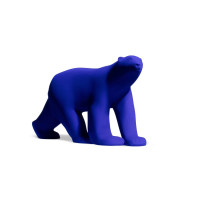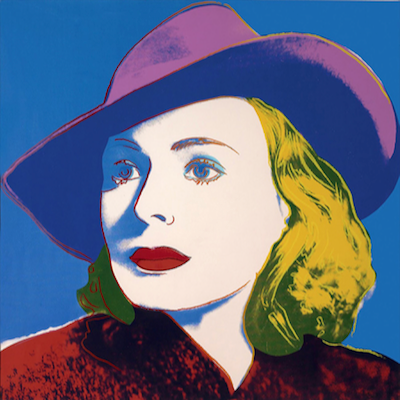


Details
Artist
Styles
Rose pigment, glass, plexiglass, wood, and steel - This work is from an edition begun in 1963 under the supervision of Rotraut Klein-Moquay based on a model by Yves Klein - Signed R. Moquay and numbered on a label affixed to the underside // Yves Klein's Table Rose (1961/1963) is an iconic piece blending art with functional design, part of a limited-edition series produced posthumously under the supervision of Klein's widow, Rotraut Klein-Moquay. This low table features a vibrant pink pigment encased in glass and plexiglass, with a minimalist structure supported by sleek steel legs. The intense, saturated pink hue, characteristic of Klein's exploration of color, creates a striking visual impact and evokes a sense of warmth and vibrancy. Encasing the pure pigment within clear, clean-lined materials transforms the table into a display of color and texture, turning a functional object into an artwork. Signed and numbered on the underside, Table Rose challenges the boundaries between art and everyday objects, exemplifying Klein’s fascination with pure color fields and his legacy in monochromatic exploration.
Table Rose, 1961/1963
form
Medium
Size
37.5 x 100 X 126 cm
- Inches
- Centimeters
Edition
Price
- USD
- EUR
- GBP
Details
Artist
Styles
Rose pigment, glass, plexiglass, wood, and steel - This work is from an edition begun in 1963 under the supervision of Rotraut Klein-Moquay based on a model by Yves Klein - Signed R. Moquay and numbered on a label affixed to the underside // Yves Klein's Table Rose (1961/1963) is an iconic piece blending art with functional design, part of a limited-edition series produced posthumously under the supervision of Klein's widow, Rotraut Klein-Moquay. This low table features a vibrant pink pigment encased in glass and plexiglass, with a minimalist structure supported by sleek steel legs. The intense, saturated pink hue, characteristic of Klein's exploration of color, creates a striking visual impact and evokes a sense of warmth and vibrancy. Encasing the pure pigment within clear, clean-lined materials transforms the table into a display of color and texture, turning a functional object into an artwork. Signed and numbered on the underside, Table Rose challenges the boundaries between art and everyday objects, exemplifying Klein’s fascination with pure color fields and his legacy in monochromatic exploration.
- Recently Added
- Price (low-high )
- Price (high-low )
- Year (low-high )
- Year (high-low )
What is pop-art?
Pop Art is an art movement that began in Britain in 1955 and in the late 1950s in the U.S. It challenged traditional fine arts by incorporating imagery from popular culture, such as news, advertising, and comic books. Pop Art often isolates and recontextualizes materials, combining them with unrelated elements. The movement is more about the attitudes and ideas that inspired it than the specific art itself. Pop Art is seen as a reaction against the dominant ideas of Abstract Expressionism, bringing everyday consumer culture into the realm of fine art.














